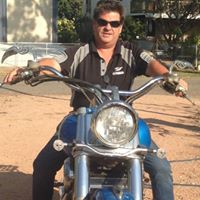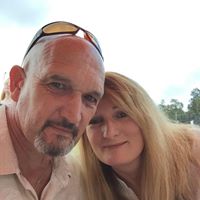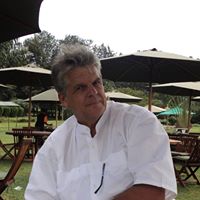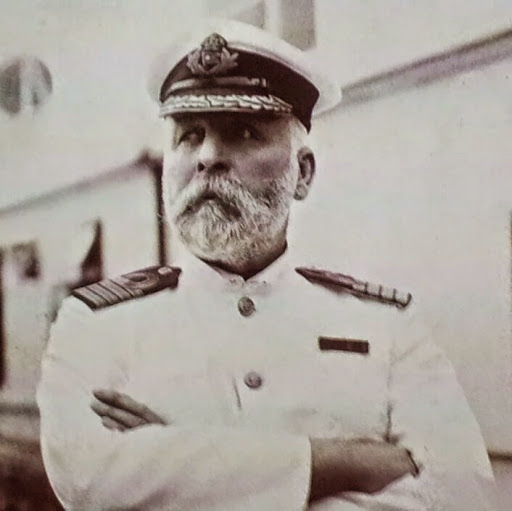Peter E Webber
age ~84
from Petaluma, CA
Peter Webber Phones & Addresses
- 107 Hill Blvd, Petaluma, CA 94952 • (707)7627616
- San Rafael, CA
- 107 Hill Blvd, Petaluma, CA 94952
Isbn (Books And Publications)


Essential Gcse Geography: Current Issues Future Scenarios
view sourceAuthor
Peter Webber
ISBN #
0748760407
Medicine Doctors

Peter B Webber
view sourceSpecialties:
Internal Medicine
Name / Title
Company / Classification
Phones & Addresses
Owner
Webber Plumbing
Plumbing/Heating/Air Cond Contractor
Plumbing/Heating/Air Cond Contractor
107 Hl Blvd, Petaluma, CA 94952
Us Patents
-
Flexible 3D Printed Orthodontic Device
view source -
US Patent:20210259809, Aug 26, 2021
-
Filed:Feb 24, 2021
-
Appl. No.:17/249218
-
Inventors:- San Jose CA, US
Peter WEBBER - San Mateo CA, US
Jun SATO - San Jose CA, US
Crystal TJHIA - Sunnyvale CA, US
Jessica H. SCHILTZ - San Jose CA, US
Jeremy RILEY - Mountain View CA, US
Ken WU - San Jose CA, US
Kangning SU - Arlington VA, US
Yuxiang WANG - Newark CA, US
Zhaonan SUN - Charlottesville VA, US
Andrei SOLDATOV - Santa Clara CA, US -
Assignee:ALIGN TECHNOLOGY, INC. - San Jose CA
-
International Classification:A61C 7/08
-
Abstract:A dental attachment placement device comprises a plurality of articulated registration elements shaped for placement on a plurality of teeth, which can facilitate placement, accommodate tooth movement, and improve alignment of the registration elements with the teeth, so as to accurately position an attachment for placement. The plurality of registration elements may comprise one or more attachment supports and one or more retention supports extending from the plurality of registration elements. A dental attachment can be removably coupled to the attachment support. The plurality of registration elements and attachment supports may be located on opposing sides of one or more teeth in order to maintain placement prior to adhering the attachment to the tooth. In some embodiments, each of the plurality of registration elements comprises a tooth registration surface shaped to engage the tooth with a specific position and orientation for accurate positioning of the attachment.
-
Flexible 3D Printed Orthodontic Device With Attachment Supports
view source -
US Patent:20210259810, Aug 26, 2021
-
Filed:Feb 25, 2021
-
Appl. No.:17/249253
-
Inventors:- San Jose CA, US
Peter WEBBER - San Mateo CA, US
Jun SATO - San Jose CA, US
Crystal TJHIA - Sunnyvale CA, US
Jessica H. SCHILTZ - San Jose CA, US
Jeremy RILEY - Mountain View CA, US
Ken WU - San Jose CA, US
Kangning SU - Arlington VA, US
Yuxiang WANG - Newark CA, US
Zhaonan SUN - Charlottesville VA, US
Andrei SOLDATOV - Santa Clara CA, US -
Assignee:ALIGN TECHNOLOGY, INC. - San Jose CA
-
International Classification:A61C 7/08
A61C 7/00
B33Y 80/00 -
Abstract:A dental attachment placement device comprises a plurality of articulated registration elements shaped for placement on a plurality of teeth, which can facilitate placement, accommodate tooth movement, and improve alignment of the registration elements with the teeth, so as to accurately position an attachment for placement. An orthodontic device may include a plurally of registration element. A plurality of first flexible arms may extend from each registration element on a lingual side. The first flexible arm may have a connected end and a distal end. The distal end may be configured to extend at least part way over the tooth and apply a lingual force to bias the registration element against the tooth. A plurality of attachment supports may each be located on a buccal side of the plurally of registration elements and include an attachment frame that is releasably coupled to an attachment.
-
Flexible 3D Printed Orthodontic Device With Flexible Arms
view source -
US Patent:20210259812, Aug 26, 2021
-
Filed:Feb 25, 2021
-
Appl. No.:17/249254
-
Inventors:- San Jose CA, US
Peter WEBBER - San Mateo CA, US
Jun SATO - San Jose CA, US
Crystal TJHIA - Sunnyvale CA, US
Jessica H. SCHILTZ - San Jose CA, US
Jeremy RILEY - Mountain View CA, US
Ken WU - San Jose CA, US
Kangning SU - Arlington VA, US
Yuxiang WANG - Newark CA, US
Zhaonan SUN - Charlottesville VA, US
Andrei SOLDATOV - Santa Clara CA, US -
Assignee:ALIGN TECHNOLOGY, INC. - San Jose CA
-
International Classification:A61C 7/14
A61C 7/08
A61C 7/00
B33Y 80/00 -
Abstract:A dental attachment placement device comprises a plurality of registration elements shaped for placement on a plurality of teeth and one or more flexible arms for biasing the registration element to a tooth. A first a first flexible arm may extend from a registration element on a lingual side. The first flexible arm may have a connected end and a distal end. The distal end may be configured to extend at least part way over the tooth and apply a lingual force to bias the registration element against the tooth.
-
Systems And Method For Additive Manufacturing Of Dental Devices Using Photopolymer Resins
view source -
US Patent:20210030516, Feb 4, 2021
-
Filed:Jul 29, 2020
-
Appl. No.:16/942330
-
Inventors:- San Jose CA, US
Peter WEBBER - San Mateo CA, US
Michael Christopher COLE - Longmont CO, US -
Assignee:ALIGN TECHNOLOGY, INC. - San Jose CA
-
International Classification:A61C 7/00
B29C 64/124
B29C 64/393
B33Y 10/00
B33Y 50/02
B33Y 80/00
A61C 7/14
A61C 7/08 -
Abstract:Strategies that reduce shrinkage and ultimately warping of parts that are directly fabricated from photopolymer resins. This increases the accuracy of directly fabricated parts, which is essential for patient specific applications. Implementing these strategies can reduce the need for directly fabricated parts to have supporting structures, which can reduce pre-processing and post-processing steps and facilitate an easier route for production level scale of additive manufacturing.
Resumes

Peter Webber
view sourceEducation:
Montavista High School

Student At Northern Kentucky University
view sourceLocation:
United States
Industry:
Civic & Social Organization
Education:
Northern Kentucky University 1992 - 1996
Classmates

Peter Webber
view sourceSchools:
Rexford High School Beverly Hills CA 1988-1992
Community:
Michelle Rogers, Terry Thompson, Elaine Maynard, Gay Griffin

Peter Webber
view sourceSchools:
Charlestown High School Charlestown IN 1987-1991
Community:
Joyce Toan

Peter Webber
view sourceSchools:
Fish Hoek High School Cape Town South Africa 1988-1992

Peter Webber
view sourceSchools:
Ridgemont High School Ottawa Morocco 1966-1970
Community:
Kenneth Williams, Brian Burgess, Pam Gray

Fish Hoek High School, Ca...
view sourceGraduates:
Peter Webber (1988-1992),
Tamaryn Munro (1997-2001),
Colinett Robertson (1968-1972),
Frozen Ghost (1997-2001)
Tamaryn Munro (1997-2001),
Colinett Robertson (1968-1972),
Frozen Ghost (1997-2001)

Rexford High School, Beve...
view sourceGraduates:
Peter Webber (1988-1992),
Mark Speizer (1957-1961),
Mark Miles (1967-1971),
Mario Perera (1995-1999),
Randi Levine (1971-1973),
Mark Conahan (1973-1977)
Mark Speizer (1957-1961),
Mark Miles (1967-1971),
Mario Perera (1995-1999),
Randi Levine (1971-1973),
Mark Conahan (1973-1977)
Myspace
Youtube
Flickr

Peter Webber
view source
Peter Webber
view source
Peter Webber
view source
Peter C. Webber
view source
Peter Webber
view source
Peter Webber
view source
Peter Webber
view source
Peter Webber
view sourceGoogleplus

Peter Webber
Education:
Wayne State University/ MBA, University of Phoenix/ BS Information Technology

Peter Webber

Peter Webber

Peter Webber

Peter Webber

Peter Webber

Peter Webber

Peter Webber
Get Report for Peter E Webber from Petaluma, CA, age ~84

















